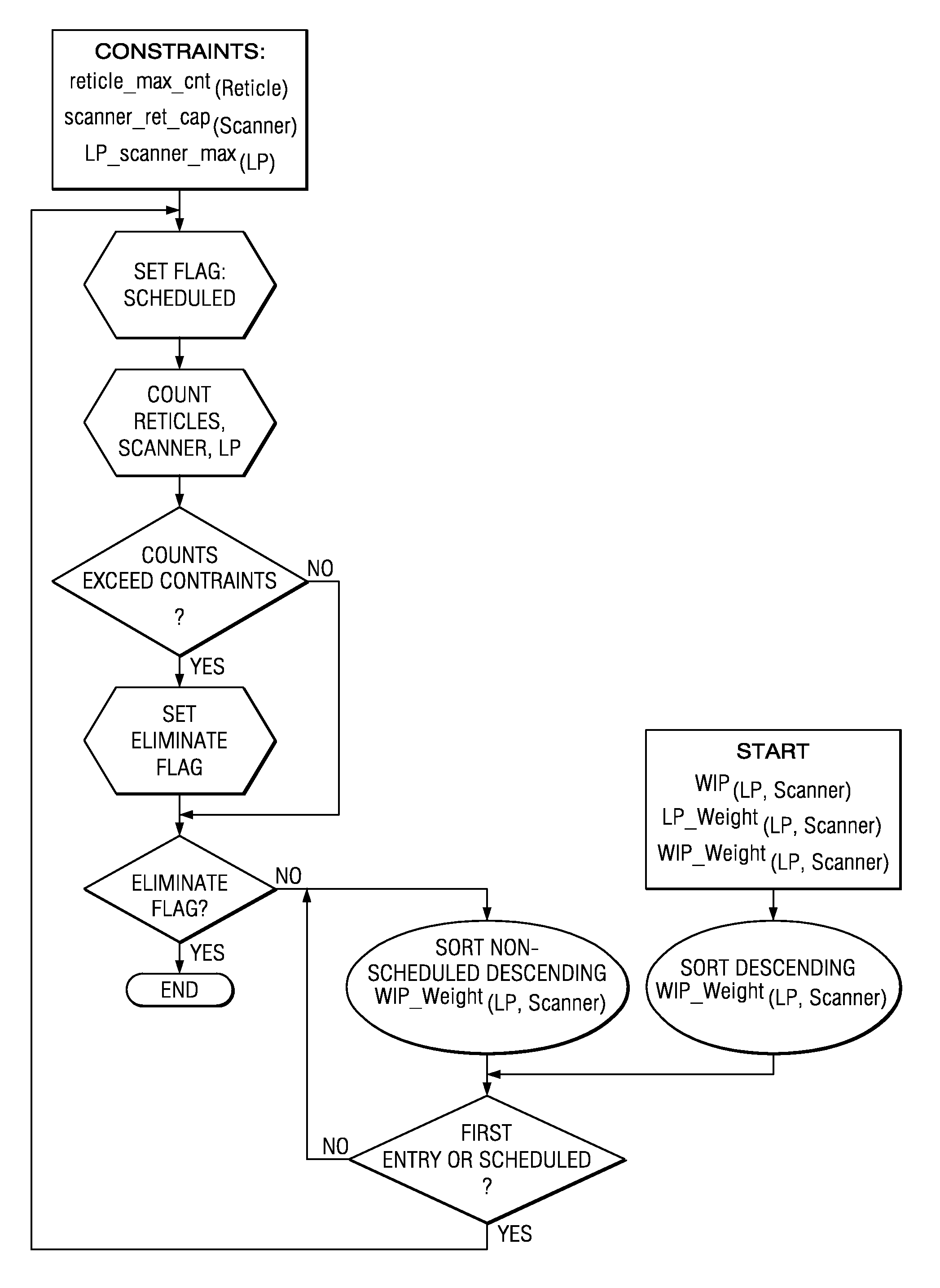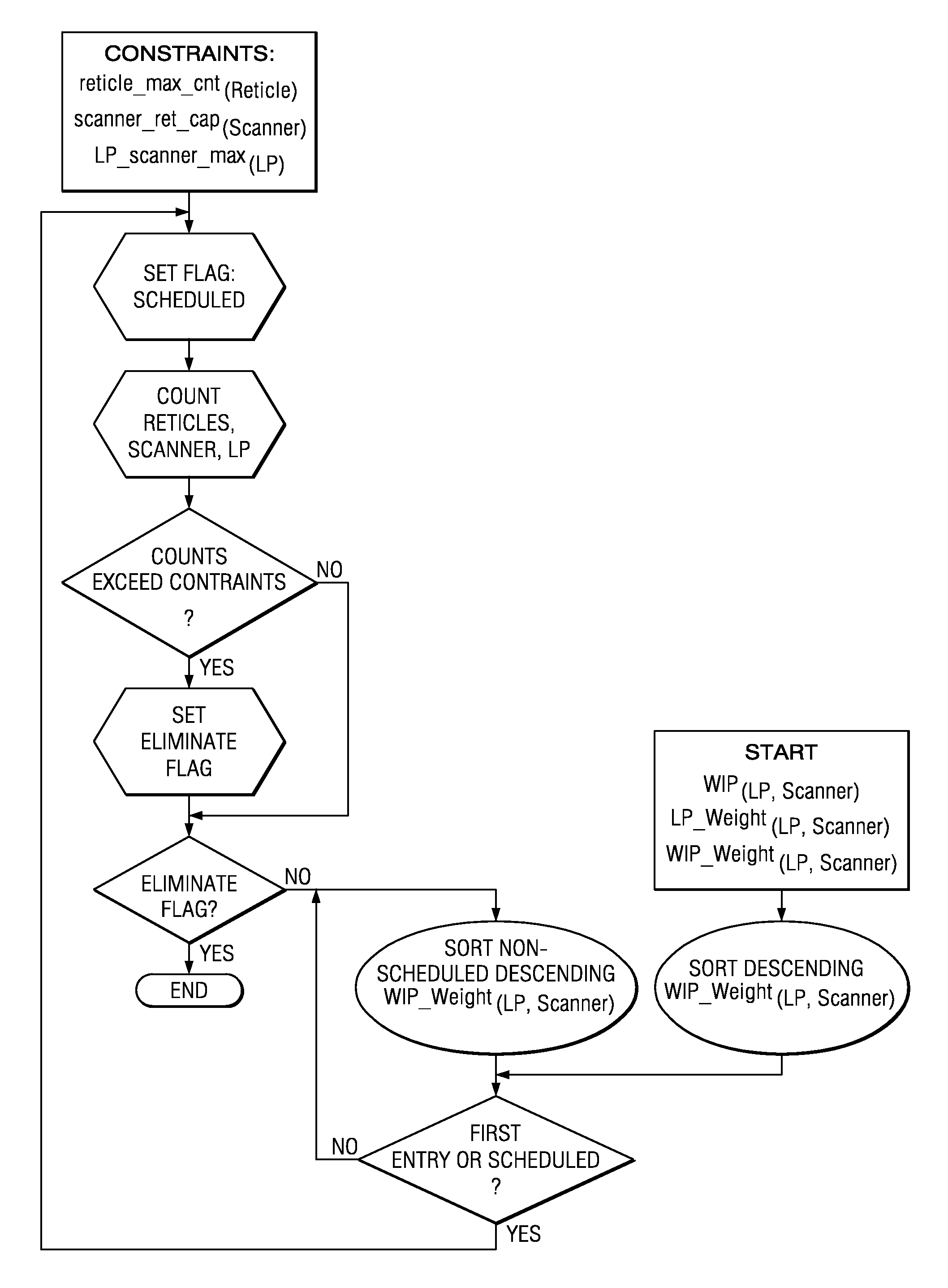Scheduling system and method
- Summary
- Abstract
- Description
- Claims
- Application Information
AI Technical Summary
Benefits of technology
Problems solved by technology
Method used
Image
Examples
Embodiment Construction
1. Overview
[0010]The preferred embodiment methods for a wafer fab solve the problem of which scanner (or stepper) runs which reticle while also managing current inventory and production line linearity. Managing reticles appropriately is extremely important in that tool time is not wasted while requisitioning a reticle from one scanner to another causing lost production opportunity. It is also important to maintain line linearity so that the utilization of the factory's other capital is maximized, but this must be balanced against current inventory at the scanners for cycle time considerations.
[0011]The preferred embodiment methods manage all three concerns and have demonstrated to perform at near optimality with minimal computational time making them very successful in making intelligent resource management decisions. The three preferred embodiment methods have differing emphases: The first places more emphasis on maintaining fab linearity, the second places the most emphasis on ret...
PUM
 Login to View More
Login to View More Abstract
Description
Claims
Application Information
 Login to View More
Login to View More - R&D
- Intellectual Property
- Life Sciences
- Materials
- Tech Scout
- Unparalleled Data Quality
- Higher Quality Content
- 60% Fewer Hallucinations
Browse by: Latest US Patents, China's latest patents, Technical Efficacy Thesaurus, Application Domain, Technology Topic, Popular Technical Reports.
© 2025 PatSnap. All rights reserved.Legal|Privacy policy|Modern Slavery Act Transparency Statement|Sitemap|About US| Contact US: help@patsnap.com



